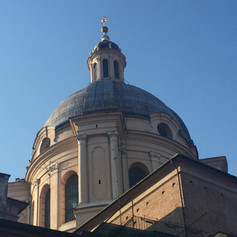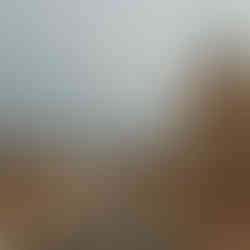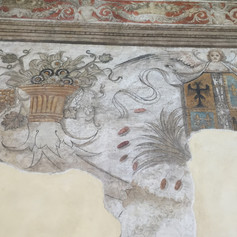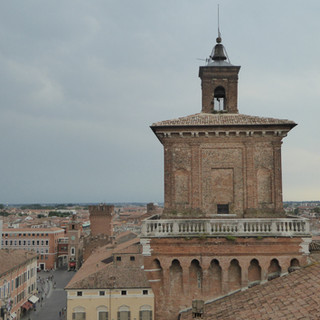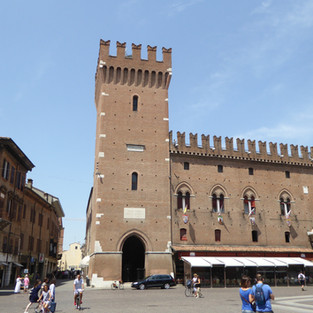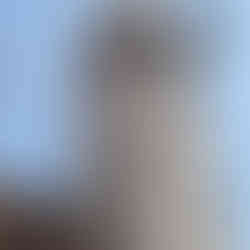
Disclosure: some of the links on this site are affiliate links with companies I have chosen to partner with. If you make a purchase through these, I may receive a small commission at no extra cost to you. Thank you for your support!
On this trip to Italy we took the road less-traveled and explore the north / north-eastern regions of Emilia-Romagna and Lombardy after spending a few days in Lucca in Tuscany. Over ten days we ate the most amazing food, drove through the most stunning landscapes, met the warmest people and saw some of the greatest art and buildings of our lives, mostly unfrequented by tourists. We didn't want to leave and we're already making plans to come back as soon as we can.
Our trip up north took in three fantastic and very different cities: Ferrara and Bologna in Emilia-Romagna, and Mantua in Lombardy. We also took a day-trip from Ferrara to Ravenna to see the mosaics. You will most likely need to hire a car for this trip, though it is possible to use public transport. Train or bus connections from Bologna to either city are infrequent and not direct, involving a number of changes, so rather than wasting precious hours on public transport we bit the bullet and played Russian Roulette with our lives on the roads of Italy. All the stereotypes you've heard about Italian drivers are true. They drive like maniacs, indicators are rarely used, and overtaking six cars or trucks on a blind bend is not unheard of. All part of the adventure I suppose.
Contents:
Ferrara: an introduction
Our first stop was Ferrara, a city not on my radar at all until I watched the fantastic BBC Show Italy Unpacked presented by art historian Andrew Graham-Dixon and chef Giorgio Locatelli. They tend to focus on the lesser-visited spots in Italy and this was one of their featured towns which stuck with me as somewhere we should definitely visit. We started researching places to stay and when we found this spot, Villa Horti della Fasanara, we knew we were going to Ferrara.
Ferrara: a wonderful boutique hotel
What an absolute gem of a place to stay. Ferrara is a walled city, surrounded by 9 kilometers of old city defenses. The hotel is located within the walls, but is about 1.5 kilometers from the city centre, down a quiet cul-de-sac and surrounded by trees. The location is simply perfect - peaceful and tranquil with nothing to be heard but the sound of cicadas, yet we could be in the heart of the city in less than 15 minutes on foot, or even quicker on the free bicycles provided by the hotel. Driving is restricted within the old town and everyone cycles there, so the free bikes were such a great touch. We used them multiple times a day and our car sat unused for most of our stay.
First let me tell you about our hotel - it was every bit as gorgeous in reality as it looked in the photos online. The house itself was fabulous with its terracotta-coloured brick, tree-lined approach to the entrance and flower-boxes on every window sill.
Elda, the manager, was warm and friendly and very proud of her city and her hotel. Rightly so - our room was incredible. We'd booked a deluxe suite here as a treat, which, despite having a huge living room area with separate bedroom and bathroom on the mezzanine level, didn't cost an arm and a leg. We've spent more on shoebox-sized rooms in London in the past. The room was bright and airy with excellent air-conditioning, huge windows with views of the garden on two sides, a Nespresso machine and lots of wardrobe space. We practically had the place to ourselves - as far as we could see there were only two other guests.
And now for Ferrara itself: built on the banks of the River Po, it has quite a different feel to other Italian cities. Though it's a university town, it has an aura of grandeur and majesty with its wide streets lined with palaces everywhere you go. I read afterwards that Ferrara was the first place in Italy to implement what we would today call urban planning as a reaction against the chaotic development of towns and labyrinth-like streets from Medieval times. This was carried out from the 14th to 16th centuries under rule of the Este Dynasty whose presence is felt everywhere in the city to this day in its architecture and art and its expression of the Renaissance ideals of harmony and order. In comparison to the higgledy-piggledy layouts and narrow streets of other Italian cities, this one definitely felt more grand and ordered.
It's not a big city - you can get from one side to the other in a short time and the old town is quite compact with many of the main sites located close together. I definitely recommend getting your hands on a bike - it's the best way to get around and we felt like locals after a few days, zipping in and out through crowds of people. There are bike stations everywhere and it felt like a very safe city - there were bikes left unlocked, or locked only to themselves all over the city, in sharp contrast to Dublin where you could lose a wheel in the blink of an eye.
Travel Guide: What to do in Ferrara:
A fun and interactive scavenger hunt
First question - would you like to discover some of the secrets and curiosities of Ferrara without having to commit to a guided tour? If so, then the ClueGo trail app might be for you. Part self-guided tour and part scavenger hunt, the app allows you to have an immersive and interactive experience through the city, following a trail of fascinating stories. Your powers of observation and creativity will be tested to solve the clues and riddles to get from one destination to the next. It's a fun and unique way to experience a city, and you can do it at your own pace.
Price: €17.99 for a max group of 5 people. It's a 3 km trail with 9 stops and 9 riddles. Join the fun here
Buona fortuna!!
Cycle around the old city walls
This was one of my favourite things to do. As I already mentioned, the city walls are approximately 9 kilometers in diameter. There are two cycle tracks - one running along the outside of the walls and one that runs along the top of the wall which you are sharing with pedestrians. I recommend the latter as you get views from both sides and it has the benefit of being shaded by trees most of the way around - helpful as it gets quite hot and humid in Ferrara in summer. It's a great way to see the city and we were lucky enough to have an entrance point for the wall located just minutes from the hotel.
Visit Casa Romei, 30, Via Savonarola
This was my favourite building in Ferrara and the entrance ticket is a mere €3. Casa Romei was built in the late 15th century by merchant Giovanni Romei who also happened to be administrator to the Este lords. To show off his high-ranking position in society he had this beautiful city villa built which was filled with frescoes, paintings and sculpture, many of which have survived to this day.
We went on a Sunday morning which seemed to be the perfect time to visit as there was hardly any other visitors. It's such an incredibly tranquil and peaceful place, particularly the internal courtyard which is surrounded on all sides by Renaissance arches - it felt like an oasis of calm despite being so close to the city centre. In the ground floor rooms you can see some very striking and well preserved frescoes and friezes running across the upper parts of the walls. In one of the rooms is a very unusual Ferrarese-style fireplace which apparently is the last one in existence.
In the rooms on the first floor are even more delicate frescoes on the walls of the loggia, as well as a great collection of sculpture from 16th and 17th centuries and earlier.
Throughout the year this museum also hosts contemporary art exhibitions with the work strategically placed throughout, often alongside the existing ancient art. We were lucky enough to catch a very affecting exhibition on the theme of migration and the experience of immigrants entitled 'Entire life in a package' - Storie di Migrazioni. You can see from the images below how the work was placed alongside the more historic pieces, yet it worked really well. If you take a look at their Facebook page here you can see photos of the works in situ in the rooms, in addition to images of previous exhibitions that have taken place here.
You won't want to miss this museum so make sure to check online re: the opening times. It only opens until 2pm on certain days, and on other days only opens at 2pm but stays open until later in the evening.
Experience the grandeur of Castello Estense (Este Castle)
This is the iconic image of Ferrara - an imposing medieval castle with four towers surrounded by a moat and presiding over the city. Construction started in 1385 with final additions being added up to the 19th century. It was built by Niccolò II d’Este as a defensive structure for his family and remained the seat of the Este family throughout their reign in Ferrara. It loomed ahead as we cycled into the city from our hotel, up Corso Ercole I d'Este on our first night in the city. It's a impressive sight and a must-visit.
I'm not going to go into the very interesting history of the castle as you can read that here but there are a few highlights that I'd like to mention.
The dungeons: this is where they kept prisoners found guilty of crimes against the Este dynasty. There are a series of them, getting progressively smaller as you move down the corridor: all are damp and horrifically claustrophobic with only the tiniest windows to allow minimal light and air - not a pleasant experience but fascinating all the same. We know from their website that these were no ordinary prisoners but were often high-ranking officials who had plotted against the family - you can still see their graffiti on the walls of the larger cells.
Torre dei Leoni: this incurs an extra cost on your entrance ticket but is so worth it. From the top you get panoramic views of Ferrara city from all sides with a sea of red roofs and terracotta-coloured buildings as far as the eye can see. It was quite a gloomy grey day with the onset of a thunderstorm when we visited but somehow it just added to the atmosphere.
The garden and loggia of the oranges: this was an unexpected surprise - on one of the upper levels you can step out onto this gorgeous courtyard filled with orange trees with the clock tower as a backdrop.
Just as an aside - there is a nice café / bar in the Castello with a very friendly barman. You can get a Spritz here for €3 and a sparkling water for €1 which I was very surprised by, considering this is one of Ferrara's biggest tourist attractions.
Aperitivo time in Ferrara
Enjoy an aperitivo in one of many fantastic bars throughout the city
This is always one of my favourite things to do in Italy though it's a hell of a lot cheaper to do it in Ferrara. While not being particularly cheap for food, drinks are great value, perhaps because it's a university town. Our favourite spot was Locanda del Furioso on Via Saraceno, away from the main tourist spots, so we were surrounded by locals on our Friday night out. The bar staff were very friendly, the wine they recommended was excellent and a really good Campari Spritz costs €4. I should also mention the free tapas on the counter which we helped ourselves to. The interior of the bar is really cool too with stripped stone walls and long wooden tables suspended from the ceiling by iron chains.
Birraria Giori beside the Castello also does a mean (and super-strong) Negroni for €6. Cycling afterwards was an interesting experience. Again I was surprised by the price of drinks - this bar has one of the best views in the city but the prices don't reflect that at all. We also had a very good lunch here one afternoon. Up to my ears in pasta I opted for the Caprese salad with Burrata and Martin had a chicken salad. Both were huge and very tasty.
Other things to do in Ferrara: the Piazza della Cattedrale is in the heart of the old town, just around the corner from the castello, and is worth visiting for its imposing buildings and the very unusual cathedral with its pink and white campanile. I also loved the quite modern street lights.
There are loads of galleries but unfortunately all were closed for rehanging or renovations while we were visiting which was gutting, especially since our hotel was located a few minutes from the Museum of Modern and Contemporary Art in Palazzo Massari on Corsa Porta Mare. This is not to be confused with the Modern and Contemporary Art Gallery which can be found in the Palazzo dei Diamanti, the building on Corso Ercole I d'Este with the very unusual facade covered in sharp diamonds of stone. Both were a stone's throw from our hotel but it was not to be on this occasion.
Ferrara Travel Guide: Our restaurant picks
It's no exaggeration to say we had one of the best meals of our lives in Ferrara. The place - Trattoria Il Sorpasso on Via Saraceno. If you were to judge on appearances, you probably wouldn't give it a second glance with its colourful, childlike artwork on tiles above the door, its illuminous coloured but mismatched wooden chairs and the slightly gaudy glassware which could only be described as kitsch. But the reviews we'd read were overwhelmingly positive so we had to try it. And boy were we glad we did.
This is a place loved by Ferrarese locals and I can see why. It's unpretentious but they take their food very seriously. For starters I had smoked aubergine in a tomato sauce with rice, of all things, served in a jar. It was delicious - full of flavour. But the winner was Martin's 'Tagliatelle - Sorpasso style' with porcini mushrooms, bacon and cherry tomatoes. I have never tasted a more perfect pasta dish (the tagliatelle itself was off-the-charts) and ate half of his. I went for aubergine again for my 'Norma Linguine' main course with tomato, ricotta and basil and Martin ordered the strangest titled item on the menu which translates as 'The Pork who was thinking of being a Pizza'. He's still talking about it. I'm still laughing at the name. We had a really nice bottle of red from the Veneto and shared a meringue dessert. The staff were very welcoming and friendly and we were given two Limoncellos on the house at the end. We had lots of amazing food while on this trip but nothing beat this spot.
I suggest you make reservations if you are in Ferrara on a weekend. We were not so lucky the night afterwards (Saturday) as we stupidly had not booked anything and ended up cycling all over the city to find somewhere that could take us. We ended up in Il Ciclone on the same street which was a lot more touristy and a lot less tasty. However we lucked out again on our final night. We booked a table through The Fork en-route back from Ravenna to make sure we wouldn't have a repeat from the night before. The place was Ostinato on Via delle Scienze. It's a modern bistro serving Italian food with a twist. We were seated out the back in their lovely garden area which had lights in the trees. Service was great - our waitress was chatty and friendly which set the tone for a lovely evening. Again the pasta was really good. I loved my spinach & ricotta tortelloni with butter and sage. Simple and very tasty. For mains I went for a carb-free option for the first time on the trip - tuna tataki with a sesame crust. Martin opted for a pork tagliata. Everything was delicious and we had a nice bottle of wine to accompany. To top it off, we got a 20% discount on the entire bill for booking through The Fork so it was excellent value for money.
My final recommendation is Pizzeria Osteria Adelardi on Via Guglielmo degli Adelardi, a gorgeous side-street off Piazza della Cattedrale. We had lunch here on one of the days and were lucky enough to get one of the tables outside on the street - the perfect spot for people watching. Service was not the sharpest but we could maybe put that down to my less-than-perfect Italian and their lack of English. The pizzas were great - mine had ricotta, cherry tomatoes and courgette, while Martin went for a salami option. We had a glass of wine each and coffees were strong and very good - hit the spot nicely for another round of sightseeing.
A day trip to Ravenna:
If you have a car while in Ferrara I highly recommend taking a day trip to Ravenna which is about an hour away. Ravenna is not a name that trips off most people's tongues but it is home to the most spectacular mosaics that I'd been dreaming about seeing ever since I was in college. There are eight early Christian churches and monuments in this small town that are designated as UNESCO sites due to their mosaics. We only had time to visit three and they were everything I'd imagined and a hundred times better. We paid €9.50 for a combined ticket to view all three. Tickets are available from offices close to a number of the sites. You can find out more here.
Top of my list was the Basilica of San Vitale. I walked in, looked up and my jaw hit the floor. It's one of the most profoundly special places I've ever been and the mosaics are simply stunning, dating from the mid 6th century AD - astounding really as they are so well preserved and gleaming with life. They took my breath away and I stood staring in awe with a massive lump in my throat. The walls actually shimmer as the light comes through the windows. You can probably get a sense from the photos of the level of detail here which continues along the entire uppermost part of the basilica. Greens, blues and golds are the predominant colours used and the stories depicted are part religious and part secular with high levels of elaborate ornamentation on the ceiling and dome. There are two famous panels depicting stories from the life of the emperor Justinian and empress Theodora. In the apse we see the figure of Jesus seated on a globe, representing the universe. He is surrounded by archangels. Over the triumphal arch we see portraits of the twelve apostles in circular frames with a portrait of Jesus in the centre.
Mausoleum of Galla Placidia. As anyone who knows me will tell you I'm obsessed with stars, so this one has a particular place in my heart. Located just a few minutes' walk from San Vitale, the building itself is small and unassuming but the interior is simply magical. The upper parts of the walls are entirely decorated with 5th century AD mosaics featuring scenes from the life of Jesus and the apostles but the most striking part is the deep blue ceiling of the dome decorated with shimmering golden stars, more than 800 in total. I read that apparently Cole Porter visited the mausoleum during his honeymoon in the city, and was so taken by the starry sky that he wrote his famous song Night and Day. Who knows if it's true but it's good story.
Basilica of Sant'Apollinare Nuovo
This was our last stop-off in Ravenna before heading back to Ferrara. The effect here is different: less of the soaring verticality of the others but instead follows a horizontal frieze formation on either side of the aisle, topped with an ornate geometric gold ceiling. The mosaics appear in three bands along the walls: the upper band has scenes from the New Testament; the middle band holds thirty two figures of prophets, sixteen on each side and separated from each other by the clerestorey windows and the lower band features a procession of saints and martyrs.
It's a wonderful day-trip but in hindsight I would've spent at least one night here to really take my time with them. Next time I'll buy a guidebook to read the stories behind all the mosaics as I'm walking around but on this occasion, I left it all up my imagination.
The wonders and treasures of Ravenna: a fun and interactive scavenger hunt
To dig a little deeper, the ClueGo trail app is also available here in Ravenna. Part self-guided tour and part scavenger hunt, the app allows you to have an immersive and interactive experience through the town, following a trail of fascinating histories including an underwater church and the world's largest crossword puzzle. Your powers of observation and creativity will be tested to solve the clues and riddles to get from one destination to the next. It's a fun and unique way to experience a city, and you can do it at your own pace.
Price: €17.99 for a max group of 5 people. It's a 3 km trail with 11 stops and 10 riddles. Join the fun here
We departed Ferrara for Mantua on day four. To continue with us on our journey click here.
Buon viaggio
Karyn xx








